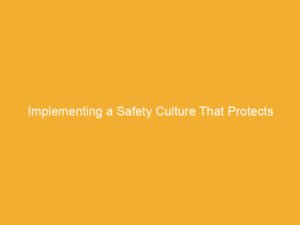
Workers Comp for Non-Profits: Affordable Coverage Without Compromise
August 1, 2025
Senior Living Facility Workers’ Comp Insurance: Compliance, Cost, and Coverage
August 1, 2025
Illustration depicting workers compensation insurance in a workplace setting.
In the dynamic landscape of workforce management, staffing companies play a critical role in connecting businesses with talent across diverse industries. However, with this pivotal function comes a complex web of regulatory responsibilities, chief among them being workers’ compensation compliance. Understanding and adhering to mandatory workers’ comp rules is essential not only for protecting the well-being of temporary and contract employees but also for mitigating legal and financial risks. This article provides a comprehensive overview of the essential workers’ comp requirements specific to staffing companies,highlighting key obligations,best practices,and the implications of non-compliance in today’s regulatory habitat.
Table of Contents
- Mandatory Compliance Requirements for Staffing Agencies in Workers’ Compensation
- Risk Assessment and Policy customization for Diverse Staffing Profiles
- Best Practices for Claims Management and Reporting Procedures
- Strategies for Minimizing Liability and Enhancing Workforce Safety
- Q&A
- Key Takeaways
Mandatory Compliance Requirements for Staffing Agencies in Workers’ Compensation
Staffing agencies must adhere to specific regulations designed to protect both their temporary employees and client businesses from the financial and legal risks associated with workplace injuries. Key among thes regulations is the obligation to secure a valid workers’ compensation insurance policy that explicitly covers all placed workers, regardless of assignment duration. This coverage ensures that injured employees receive appropriate medical care and indemnity benefits without delays. Additionally, agencies are often required to conduct thorough risk assessments and communicate safety protocols tailored to the diverse workplaces their staff may enter, promoting a proactive approach to injury prevention.
Compliance extends beyond insurance procurement and involves comprehensive documentation and reporting practices. Agencies must maintain detailed records of employee assignments, injury reports, and claim statuses to facilitate transparent interaction with state regulators and insurance carriers. Below is a summary of critical mandatory obligations:
- Insurance Verification: Continuous proof of coverage for all workforce placements.
- Accident Reporting: Immediate notification to relevant authorities and clients upon incident occurrence.
- Safety Training: Provision of job-specific safety instructions to workers prior to deployment.
- Record Keeping: Systematic documentation of claims and corrective measures.
risk Assessment and Policy Customization for Diverse Staffing Profiles
Effectively managing workers’ compensation policies for staffing firms requires a thorough understanding of the unique risks associated with diverse employee categories. Temporary, contract, and permanent workers often face varying degrees of exposure to workplace hazards, necessitating a finely tuned approach to risk assessment. Its imperative to conduct comprehensive evaluations that identify occupation-specific dangers and adjust premiums accordingly. This proactive strategy not only ensures compliance but also promotes safer working environments, ultimately reducing claim frequency and costs.
Customization of policies according to workforce composition involves defining clear parameters for risk classification, coverage limits, and claim management protocols.Below is a sample framework illustrating how risk levels might potentially be categorized and matched with policy adjustments:
| Worker Type | Risk Level | Recommended Coverage Adjustment |
|---|---|---|
| temporary Labor | Moderate | Increase premium by 10% due to variability in job roles |
| Technical Contractors | Low | Standard premium with emphasis on safety training |
| Permanent Employees | Variable | Tailored based on department-specific exposures |
Key considerations during this customization include:
- Analyzing historical claims data segmented by worker classification
- Incorporating regulatory compliance updates relevant to staffing models
- Collaborating with insurers who understand the nuances of multi-tiered workforce risks
Best Practices for Claims Management and reporting Procedures
| Step | Description | Timeframe |
|---|---|---|
| Initial Injury Report | Complete an official injury report form with all relevant details | within 24 hours |
| Medical Evaluation | Ensure the injured employee receives immediate medical attention | Same day |
| Claims Filing | Submit claim to workers’ compensation insurer | Within 72 hours |
| Follow-Up | Maintain communication with all parties throughout the claim lifecycle | Ongoing |
Strategies for Minimizing Liability and Enhancing Workforce Safety
To effectively minimize liability and foster a culture of safety, staffing companies must implement comprehensive risk management protocols. This includes conducting thorough pre-employment screenings and ensuring that all placed workers receive appropriate safety training tailored to the specific job site hazards. Equally critically important is establishing clear communication channels between the staffing firm, client companies, and employees to promptly address any workplace safety concerns.integrating regular safety audits and promoting a proactive approach to hazard identification can drastically reduce workplace incidents and associated workers’ compensation claims.
Key practices to consider:
- Mandatory safety orientation sessions before deployment
- Consistent use of personal protective equipment (PPE)
- Detailed documentation of workplace injuries and incident reports
- Periodic safety performance reviews and feedback loops
- Collaboration with insurers for tailored claims management strategies
| Strategy | Benefit |
|---|---|
| Pre-Placement Safety Training | Reduces accident rates by preparing workers |
| Clear Incident Reporting | Facilitates timely claims processing and resolution |
| Regular Site Safety Audits | Identifies hazards before they cause harm |
| Collaboration with Clients | Ensures aligned safety standards on-site |
Q&A
Q&A: Mandatory workers’ Comp Rules for staffing Companies
Q1: What is workers’ compensation, and why is it mandatory for staffing companies?
A1: Workers’ compensation is a state-mandated insurance program that provides medical benefits and wage replacement to employees injured on the job. For staffing companies, it is mandatory because they act as the employer of record for temporary or contracted workers, making them legally responsible for covering workplace injuries under workers’ comp laws.Q2: Wich employees are covered under workers’ comp for staffing companies?
A2: Generally, all temporary, contract, and leased employees placed by staffing companies are covered under workers’ compensation, regardless of whether they are onsite at the staffing company or at the client’s worksite. Coverage begins from their first day of work assignments.
Q3: How do staffing companies determine the appropriate workers’ comp classification and rates?
A3: Staffing companies must classify employees based on the nature of their job duties and associated risks. Premium rates are calculated using payroll amounts and classification codes, which reflect the level of hazard in job roles. Insurers often require detailed job descriptions to accurately assess risk.
Q4: What are the key compliance obligations for staffing firms under workers’ comp rules?
A4: Staffing companies need to:
- Secure and maintain valid workers’ comp insurance coverage in all states where they place employees.
- Report payroll and job classifications accurately to insurers.
- Handle workers’ comp claims promptly, ensuring injured workers receive timely benefits.
- Maintain communication with client companies to manage risk and claims effectively.
Q5: How do staffing companies manage workers’ comp claims involving third-party client sites?
A5: While staffing companies maintain the workers’ comp policies, clients typically control the work environment. Effective communication and clearly defined roles in service agreements help coordinate injury response, claim reporting, and examination processes. Staffing firms may also provide safety training to reduce workplace injuries.
Q6: what are the consequences of non-compliance with workers’ comp mandates for staffing companies?
A6: Failure to comply can result in severe penalties including fines, stop-work orders, liability for uncovered injuries, and potential lawsuits. Additionally, staffing firms risk losing clients if they cannot demonstrate proper workers’ comp coverage.
Q7: How can staffing companies optimize their workers’ comp programs?
A7: Companies can reduce costs and improve compliance by:
- Conducting regular safety audits and training for placed employees.
- Utilizing payroll management tools for accurate reporting.
- Partnering with experienced brokers or consultants specializing in staffing industry risks.
- Implementing proactive claims management and return-to-work programs.
Q8: Are there differences in workers’ comp requirements between states that staffing companies should be aware of?
A8: Yes, workers’ comp laws vary significantly by state, including coverage thresholds, classification rules, and reporting requirements. staffing companies must ensure compliance in each jurisdiction where they operate,often requiring multi-state coverage and localized legal expertise.
This Q&A provides a concise overview for staffing companies navigating mandatory workers’ comp requirements,emphasizing legal compliance,risk management,and operational best practices.
Key Takeaways
understanding and adhering to mandatory workers’ compensation rules is essential for staffing companies to mitigate risks and maintain compliance within the industry. By implementing robust policies,ensuring proper coverage,and maintaining clear communication with both clients and employees,staffing firms can protect their workforce and safeguard their business operations. Staying informed about evolving regulations and partnering with experienced insurance providers will further enhance a company’s ability to navigate these complex requirements effectively. Prioritizing workers’ compensation compliance not only upholds legal responsibilities but also reinforces a commitment to workplace safety and professional excellence.
“This content was generated with the assistance of artificial intelligence. While we strive for accuracy, AI-generated content may not always reflect the most current information or professional advice. Users are encouraged to independently verify critical information and, where appropriate, consult with qualified professionals, lawyers, state statutes and regulations & NCCI rules & manuals before making decisions based on this content.




